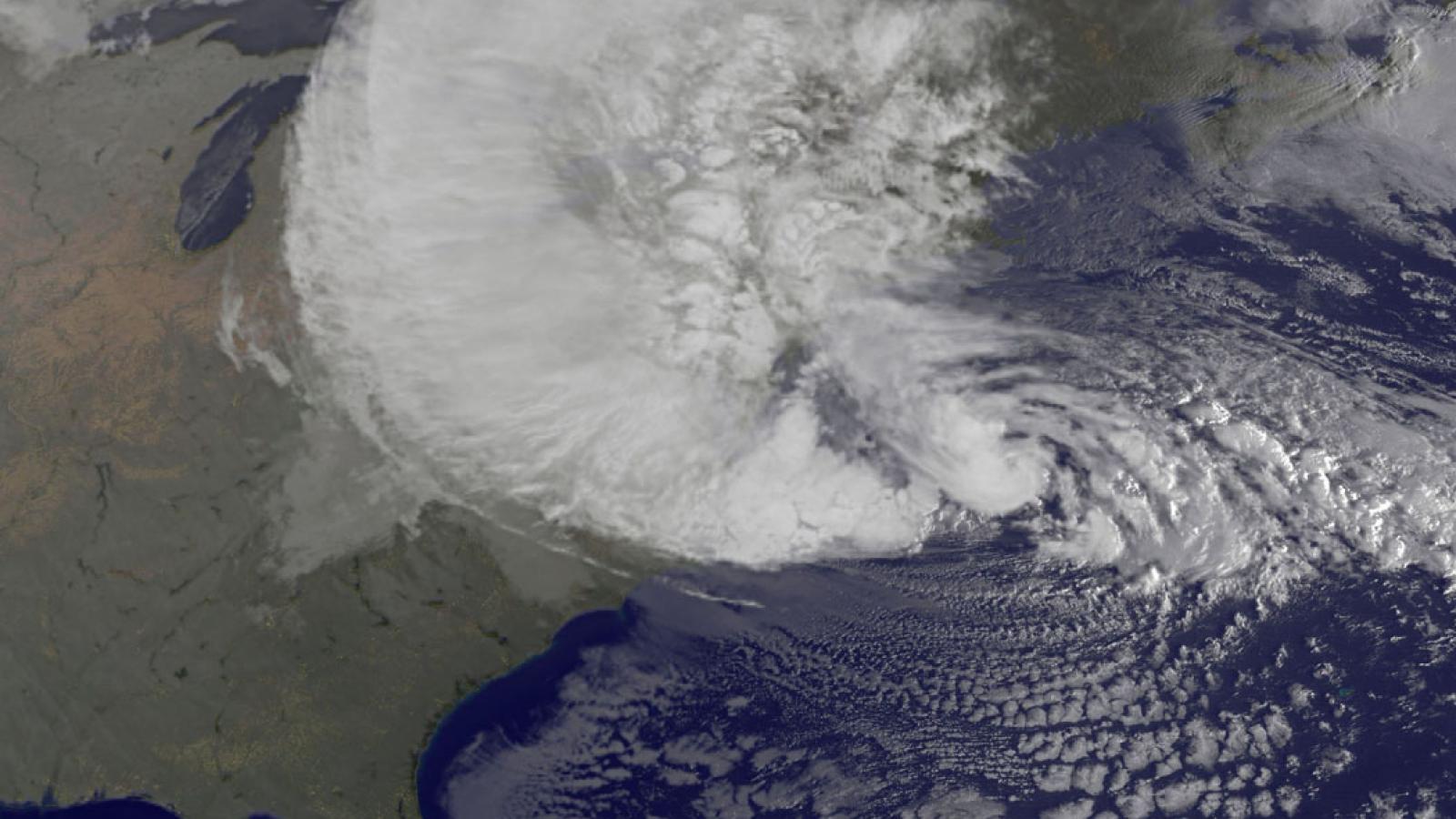Are you curious to know if…
- the severe weather season in Ohio is changing?
- Earth's glaciers are melting and if so, why?
- Pacific Ocean temperatures are linked to droughts and floods in the Midwest?
- hurricanes are getting stronger?
- Earth's climate is changing and if so, how and why?
Events in the atmosphere are linked to each other and processes driving the weather in one location may ultimately have even larger impacts at distant locations around the world. Climate is the result of the cumulative impacts of complex interactions between atmospheric and oceanic systems occurring on many scales of space and time.
Atmospheric and Climatic Studies (ACS)at Ohio State encompasses two different degree-offering programs: Atmospheric Science and Geography (Climate Studies). Although there are some differences in the requirements for each degree, students share many of the same classes and may work with the same advising faculty.
Geography (Climate Studies):
Thematically, the ACS curricula examine atmospheric systems at many spatial and temporal scales.
For example, on the molecular scale the temperature at which an ice crystal forms may determine the isotope of oxygen in the frozen water. Analysis of the isotopes of oxygen in a core of ice from a glacier may tell us about changes of the Earth's climate. Events in the Pacific Ocean such as El Niño or La Niña affect the global circulation and can change the location of the jet stream or the number of hurricanes over the Atlantic Ocean.
Students in ACS are introduced to the theoretical bases for atmospheric processes operating on multiple scales and their applications to specific phenomena. Students may choose to pursue a degree in Geography or Atmospheric Sciences.
The following table provides an overview of the major themes of teaching and research in the Atmospheric & Climatic Studies specialization, along with the names of faculty associated with these themes. However, this list is far from exhaustive. Faculty draw from a variety of subjects within and across specializations to develop their unique research interests. Click a faculty's name below for her or his specific interests. On the following page, click on the faculty's name for his or her website.
Issues and topics
The following is an example of the types of issues and topics students will study within the Atmospheric and Climatic Studies specialization.
Weather forecasting
- Satellite images
- Radar
- Model output
- Reporting
Severe weather
- Thunderstorms
- Tornadoes
- Hail
- Hurricanes
Micrometeorology
- Urban heat island
- Dust devils
- Radiation budgets
- Surface effects
- Pollution
Global climate change
- Human influence
- Impacts
- Detection
Climatology
- Drought and floods
- Classification
Atmospheric dynamics and thermodynamics
Acquired skill sets
Students can expect to acquire and perform the following skills sets within this specialization. Students also should have a solid background in mathematics and the physical science
- Critical thinking
- Critical writing
- Research
- Strong organizational skills
Technical skills
- Quantitative data analysis
- Graphic communication (including map reading and development)
- Synoptic and mesoscale weather forecasting
Atmospheric and Climate Studies Curriculum
Undergraduate Curriculum
Graduate Curriculum
Career opportunities
Geographers can find career opportunities in many fields both within and outside the field of geography. Below is a partial listing of careers that students within the Atmospheric and Climatic Studies specialization are well-suited and where previous graduates have found employment.
- Meteorologist (national weather service, television, radio, private firm)
- Climatologist
- Air quality analyst
- Outdoor parks service guide
- Professional storm chaser / weather guide
- Environmental specialist for the U.S. Environmental Protection Agency
- Environmental monitor
- Researcher (U.S. Geological Survey, National Resource and Conservation Departments Center for Atmospheric Research, Institute of Arctic and Alpine Research, etc.)
- Risk analyst (insurance industry)


